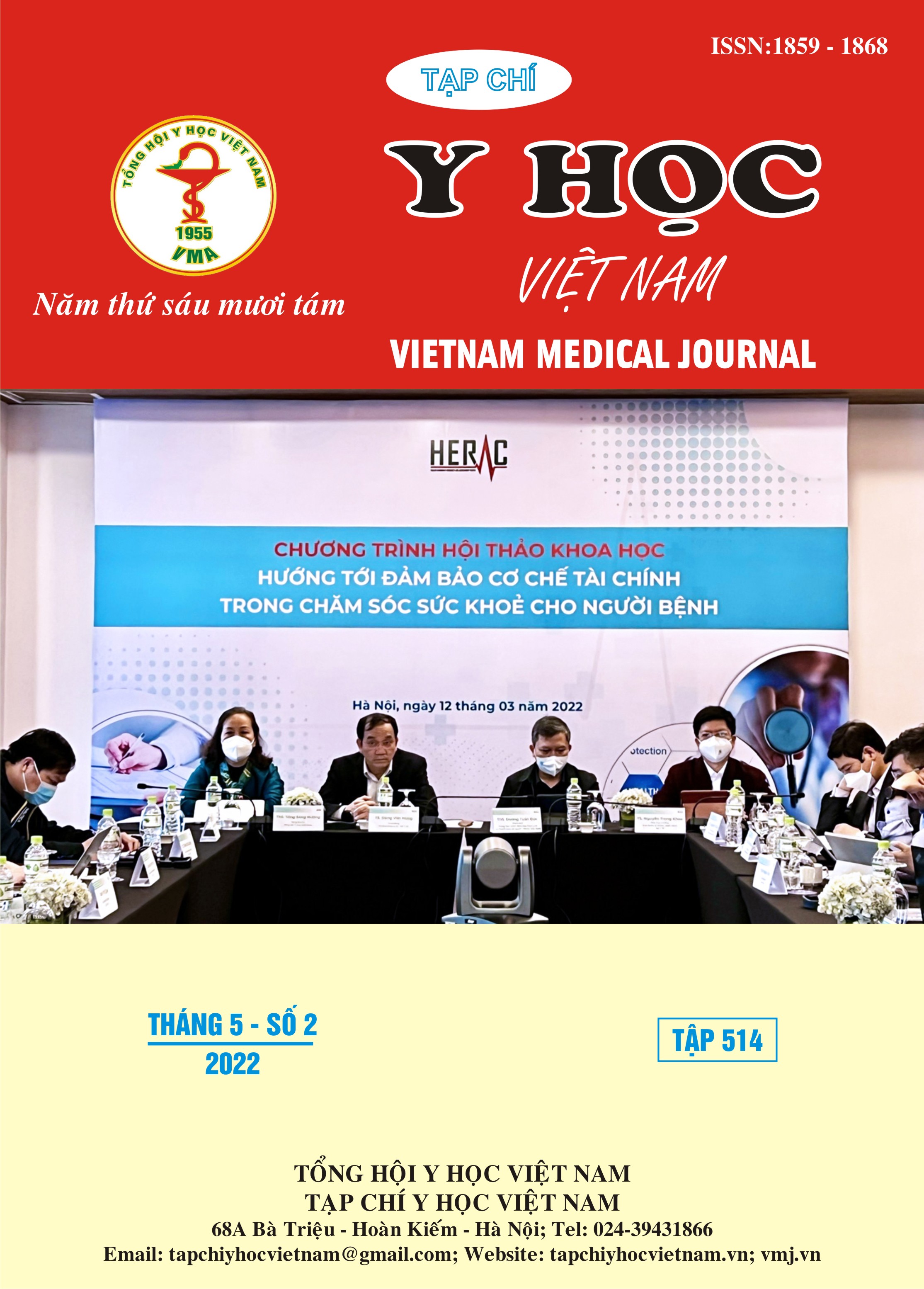CLINICAL AND SUBCLINICAL CHARACTERISTICS OF KNEE OSTEOARTHRITIS PATIENTS AT ME LINH GENERAL HOSPITAL
Main Article Content
Abstract
Objectives: Describe clinical and subclinical characteristics of patients with knee osteoarthritis at Me Linh General Hospital. Subjects and methods: A randomized clinical intervention study on 60 patients over 40 years of age with a definitive diagnosis of stage I and II knee osteoarthritis at Me Linh General Hospital from January 2021 to October 2021. Results: The age of patients with osteoarthritis in the study was mainly over 60 years old (75%), with the higher percentage of women (75% compared with 25%), most of them are workers and farmers (28.3% and 31.7%). Most of the study patients had normal BMI (83.4%). The most common clinical symptom is knee pain (100%), followed by morning stiffness (65%) and crepitus (55%). X-ray images show that grade II knee osteoarthritis is predominant in the studied patients and both knees (50% of the left knee and 43.3% of the right knee). The ultrasound image showed that there was a joint effusion on ultrasound in 35% in the left knee and 26.7% in the right knee. Conclusion: Osteoarthritis patients are usually female, over 60 years old, have normal BMI, common symptoms are knee pain, morning stiffness, and crepitus. Subclinical often has X-ray image of knee osteoarthritis grade II, with knee effusion on ultrasound.
Article Details
Keywords
Clinical, subclinical, knee osteoarthritis
References
2. Altman RD (1991), Criteria for classification of clinical osteoarthritis, JRheumatol Suppl. 27, 10-2
3. Hoàng Bảo Châu (2006), Chứng tý, Nội khoa Y học cổ truyền, NXB Y học, 528-538
4. Hawamdeh M.Z, Al-Ajlouni M.J (2013). The clinical pattern of knee osteoarthritis in Jordan A hospital based study. International Journal of medical sciences, 10(6), 790-795.
5. Zhang, W., Doherty, M., Peat, G., Bierma-Zeinstra, M. A., Arden, N. K., Bresnihan, B., ... & Bijlsma, J. W. (2010). EULAR evidence-based recommendations for the diagnosis of knee osteoarthritis. Annals of the rheumatic diseases, 69(3), 483-489.
6. Lan T.H.P, Thai Q.L, Linh D.M (2014). Prevalence of radiographic osteoarthritis of the knee and its relationship to self-reported pain. Plot One, 9, e94563
7. Muraki S, Oka H, Akune T et al (2019). Prevalence of radiographic knee osteoarthritis and its association with knee pain in the elderly of Japanese population-based cohorts: the ROAD study. Osteoarthritis Cartilage, 17(9), 1137-43
8. Sowers M, Jacobson, J.A, Jiang Y et al (2011). Associations of anatomical measures from MRI with radiographically defined knee osteoarthritis score, pain, and physical functioning. J Bone Joint Surg Am, 93(3), 241-51
9. Trần Thị Minh Hoa và cộng sự (2002), Tình hình bệnh xương khớp trong cộng đồng ở hai quần thể dân cư Trung Liệt (Hà Nội) và Tân Trường (Hải Dương), Công trình nghiên cứu khoa học tập 1, NXB Y học, 368-374.


